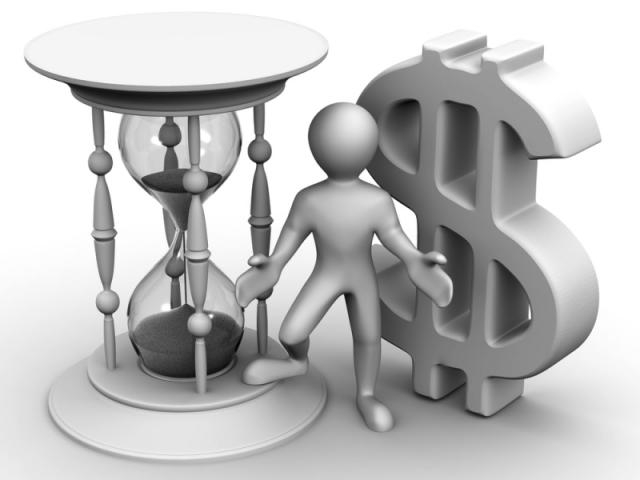Sometimes only recognition of bankruptcy helps to remove the burden of excessive credit and debts. According to the current Russian legislation, insolvency can be declared not only by a legal entity, but also by an individual and individual entrepreneur. How does this procedure work? How to declare bankruptcy? Where and to whom to turn to solve a problem? And how safe is it?

Who can declare bankruptcy?
You can learn how to declare bankruptcy from Law "On Insolvency". On its basis, both individuals and legal entities can declare bankruptcy. If you believe the latest changes made by the Committee of the State Duma of the Russian Federation, individuals can declare their insolvency if they have a bank or any other debt starting from the amount of 500,000 rubles and not paid by them within six months.
Legal entities can become bankrupt (refers to representatives of small and medium-sized businesses) with debt in the amount of 300,000 rubles. At the same time, financial difficulties for an enterprise or an individual can be expressed in the form of non-fulfillment of their loan obligations within three months (the presence of late payments).
Owners of large enterprises and industrial complexes with a debt of more than 1,000,000 rubles, as well as farmers and agricultural organizations (farmer companies, associations) with a debt of more than 500,000 can become insolvent.
However, it is worth understanding: it is not enough to learn about how you can declare yourself bankrupt in order to become a reality in it. Someone must declare your insolvency. You can do this either you or the lender. For example, the latter has the right to apply to the court on the issue of declaring a person bankrupt if a borrower does not fulfill his obligations within a certain time (3 or more months). In this case, the claim must indicate the amount of the claim.
Who makes bankruptcy decisions?
Thinking about how to declare bankruptcy, first study all the nuances of this definition. For example, it’s not enough just to tell friends, acquaintances and business partners that you currently cannot repay all credit debts, pay money on receipts. Only the court can decide whether you are bankrupt or not. He can do this on the basis of reasons leading to insolvency. But they are of an objective and subjective kind.

Objective reasons are often associated with the state of affairs independent of the entrepreneur or individual. For example, the global financial crisis in 2008 was the objective reason for the bankruptcy of many private organizations, including banking.
Subjective reasons include the reluctance of a company or entrepreneur to repay debts. Such cases arise due to the emergence of large unforeseen expenses for the company, for example, as a result of fines incommensurable with the financial capabilities of the company from the tax inspectorate (in case of violations during the inspection). In such cases, the company has no choice but to declare itself a physical bankrupt.
When can a debtor go to court?
According to the law, the debtor has the right to appeal to the court in the following cases:
- if he repaid the loan in full, but he did not have funds left for further tax payments;
- if the size of the income of the organization or individual is much less than the amount of the previously received loan;
- if the results of a financial audit revealed the insolvency of the organization.
What happens after an applicant goes to court?
Before declaring ourselves bankrupt in front of the bank, as we said, the fact of bankruptcy must be confirmed in court. To do this, the defaulter himself, the creditor or representatives of the tax services go to court. After the lawsuit is brought before the judge, all creditors (previously working with a potential bankrupt) have 31 days. Exactly so much time is given to lenders to claim the right to pay debts. If the creditors could not do this, then after this period the court introduces a moratorium, and no longer accepts any demands from them.
If your debt does not exceed 500,000 rubles, then the debtor will act as the manager by court order.
Before the debtor officially declared bankrupt, court representatives are required to appoint an interim trustee. This entity (together with the debtor) needs to draw up a plan for further debt restructuring. Moreover, it should be agreed within the next three months with existing creditors. Investors themselves can not make new changes during the preparation of the plan. After its approval, the debtor agrees to pay its creditors within 5 years. If this does not happen, then the legal entity or individual is declared bankrupt.

Then the court evaluates the assets of the bankrupt and opens a bankruptcy proceedings thereof. Property and assets are sold, and the proceeds from the sale are given as payment of debts. So how to declare bankruptcy right? Consider this procedure in more detail.
How to declare yourself bankrupt? Important Nuances
If you do not know how to declare bankruptcy, pay attention to our tips and tricks. So, if you decide not to wait for the creditors to sue you, and turn to the representatives of Themis yourself, you should start with a preliminary consultation with lawyers. It is also recommended that you hire a lawyer who can protect your interests in court. Moreover, it is desirable that he has successful experience in such matters.
Then pay particular attention to collecting documentary evidence of your insolvency. This includes tax statements and reports where the amount of expenses exceeds income, unpaid bills and receipts.
When applying to the court, it is necessary to provide documents showing bankruptcy, as well as write a statement requesting recognition of the fact of insolvency.
What data should be indicated in the application?
When writing an application, the defaulter can use the finished sample. It indicates the following information:
- name of the court (for example, the arbitration court of Vladivostok);
- FULL NAME. the applicant with his actual address of residence;
- name of the credit institution or private lender (with full address, location);
- date;
- application text (here you must list all of your creditors, the reasons for the financial collapse, creditors, contract numbers, loan amounts, terms, etc.);
- petition for official recognition of insolvency;
- applications.
Appendices usually indicate documents that are copies of contracts, debt receipts consignment notes, constituent documents, passports, etc. At the end of the statement, a signature and a date are put. It is signed by the debtor and the creditor himself or his authorized representative.
What are the consequences of declaring yourself bankrupt?
The announcement by business entities or individuals of their insolvency entails the following negative consequences:
- inability to issue new loans;
- a ban on doing business for a year (from the moment the subject is declared bankrupt);
- the inability to occupy senior positions in the enterprise;
- ban on registration of legal entities;
- loss of assets and property.
What should not be forgotten during bankruptcy?
The non-payer receives a “black mark”, which is not so easy to get rid of. And, of course, an unlawful bankruptcy announcement, the purpose of which is to intentionally evade debt, is considered fraud. Consequently, such actions are fraught with criminal liability. So before you say “I want to declare bankruptcy,” think three times. The procedure for declaring a person or company insolvent should not occur more often than once every five years.

What can not be seized?
If the court declared you bankrupt, do not be upset early. Not all assets belonging to an insolvent person can be sold under the hammer to pay debts. For example, a property cannot be confiscated from bankrupt individuals, if it is the only place of residence. The exception is a collateral apartment or a house with mortgage loans.
Money cannot be confiscated from the debtor in excess of 250,000 rubles. The total amount of withdrawal should be three minimum wages, taking into account all members of the debtor's family (including foster children and other dependents).

All seeds necessary for further sowing and livestock cannot be completely withdrawn from an agricultural enterprise. In a word, nobody will remove the “last shirt” from the debtor. On the contrary, going to court often helps the defaulter write off part of the debt and save the company or himself from ruin.
In conclusion, we note that every entrepreneur and individual should be aware of the pros and cons bankruptcy proceedings. Such a competent approach will help to avoid complications and problems in the future. Act within the law!






